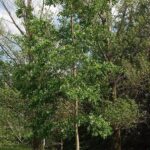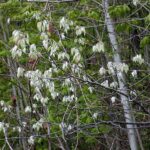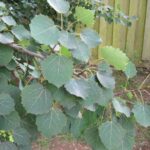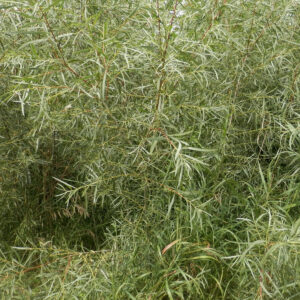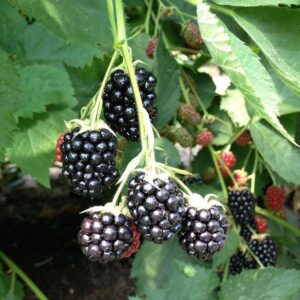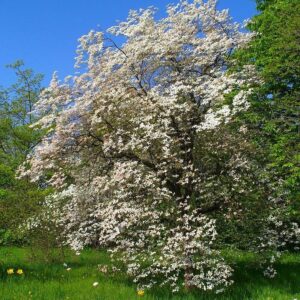-
Bigtooth Aspen is a medium-sized tree that typically reaches heights of 40-60 feet (12-18 meters) with a spread of 20-30 feet (6-9 meters). It has a slender, upright growth habit with a narrow crown. The bark is smooth and light gray when young, but it becomes darker and develops furrows as the tree matures.
-
Foliage: The leaves of Bigtooth Aspen are one of its distinguishing features. They are round to triangular in shape and have irregularly serrated or “toothed” margins, hence the name “bigtooth.” The leaves are bright green during the growing season and turn vibrant shades of yellow, orange, and red in the fall, creating a stunning display of autumn colors.
-
Flowers: Bigtooth Aspen produces small, inconspicuous flowers in the spring. The flowers are arranged in catkins, which are long, drooping clusters. They are wind-pollinated and do not have showy petals.
|
Type: |
Tree |
|
Origins: |
Northeast N. America |
|
Height: |
50′ – 75′ |
|
Spread: |
20′ – 30’ |
|
Spacing: |
25’ |
|
USDA Hardiness Zone: |
3 – 9 |
|
Culture: |
Full Sun, Part Sun |
|
Bloom Color: |
White |
|
Season of Interest: |
Fall |
MAINTENANCE NEEDS: Low Maintenance. Susceptible to a variety of diseases and pests, including cankers, leaf spots, and borers.
LANDSCAPE USES: Accents or Group Plantings, Borders, Woodland Gardens, Wildlife Garden, Naturalized Areas, and Shade Tree.
COMPANION PLANTS: Iris, Buttonbush, Passumhaw
IMAGES: OSU Landscape Plants, Populus grandidentata, (2) Homer Edward Price, Big-Tooth-Aspen, (3) Leonora (Ellie) Enking, Leaves, (4) Ayotte, Gilles, 1948-, Populus grandidentata 15-p.bot-popu.grandi-42, CC BY-SA 4.0
*As plants have ranges in appearance they may not appear as the images shown.

